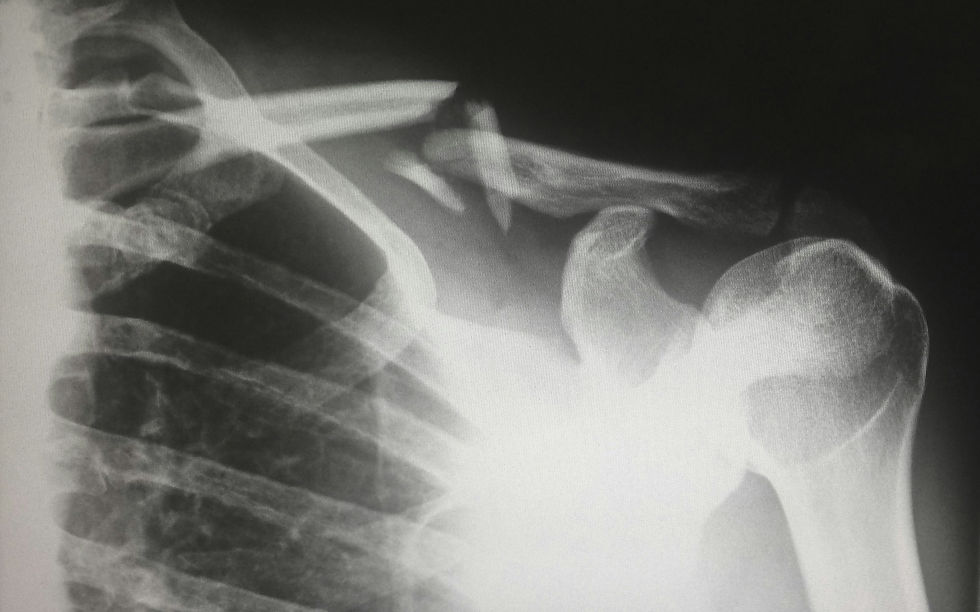Piqua Schools
- Jul 24, 2019
- 3 min read
Editor’s note: For the first time this coming fall, teachers and students at Piqua High School in Ohio will be using the Anatomy in Clay® Learning System. We thought we would touch base with the school district now, before classes begin, and we’ll also file a report after the first semester.
**
Piqua High School (“Home of the Indians”) is located near Dayton in southwest Ohio.

The thriving suburb of Piqua itself, about 20,000 residents in all, is believed to have derived its name from a Shawnee phrase, Othath-He-Waugh-Pe-Qua, translated as "He has risen from the ashes," related to a legend of the people.
Today, greater Dayton is booming and there aren’t exactly any ashes to rise from—not hardly—but the future at P.H.S. is focused on getting students ready for the future.
College, career, vocation, or military—take your pick.
Scott Bloom is one of the district administrators with a formidable job supporting the teachers who, in turn, are making sure that students reach their goals.
He’s one of two administrators in the district who holds the title of Director of Curriculum and Instruction. Scott Bloom oversees grades six through 12; his counterpart handles the elementary grades.
By the time Piqua High School students are juniors and seniors, says Bloom, they are “very career minded.”
And one of the appealing careers these days is health care and the medical field. “You can’t look anywhere without new medical career opportunities popping up,” says Bloom. “And as we tell the students, there are dozens and dozens of ways to enter the field. You don’t need to think only doctor or nurse.”
Piqua High School (PHS) is geared up. In fact, by the time the students are juniors and seniors they can take a course in Anatomy and Physiology or Anatomy Terminology, both for college credit.
In addition, the school also works with the district’s career center so they finish high school with their State Nursing Assistance Licenses in hand. “What we are trying to do is get kids ready for success,” says Bloom. (We have to say, it sounds like an amazing school.)
For years, Bloom has been known the power of hands-on learning. When he was first teaching AP Biology and Anatomy courses at nearby Tipp City High School (also Ohio), he used Play-Doh with his students. “They had to build everything that we did,” he recalls.
Today, Bloom sees his role as giving teachers and students the best instructional materials he can provide. Bloom sees it as an honor. “I get to help the teachers,” he says with a note of pride. “And we have fantastic teachers—and students.”
Bloom had spotted the Anatomy in Clay® Learning System a year or two ago in an educational journal and finally found the funds in his budget to be able to place an order this summer. He ordered 12 full Maniken® models with conversion kits so he has 24 half-models in all.
The half-models, says Bloom, “are a really good way for the kids to peer critique each other. If you each do a half and put them together, you can take a minute and say, ‘why is your muscle over there and why is my muscle over here?’”
Depending on the grade level, students across PHS will be exposed to the models and clay construction, and work on various body systems, not just muscles.
Bloom says his favorite part of the learning system is the ability to make mistakes. “You can’t do this wrong,” says Bloom. “That’s the best part. If you put a muscle in the wrong place, you fix it.”
Bloom predicts enthusiasm from the students, given the hands-on aspect. He already knows his own level excitement—he confesses that the teachers might find him in their classrooms to support the teaching and learning when the students are building.
While Bloom feels like there is barely enough time to get everything ready for the new school year, he’s also eager to see how things go in the anatomy courses.
The new school year starts on Aug. 19.
.
.
.
.
#dayton #ohio #learning #piqua #college #careeer #vocational #military #anatomy #anatomyinclay #curriculumn #school #maniken #nursing #statenursinglisence #muscle #highschool #anatomyandphysiology #anatomyterminology




Comments